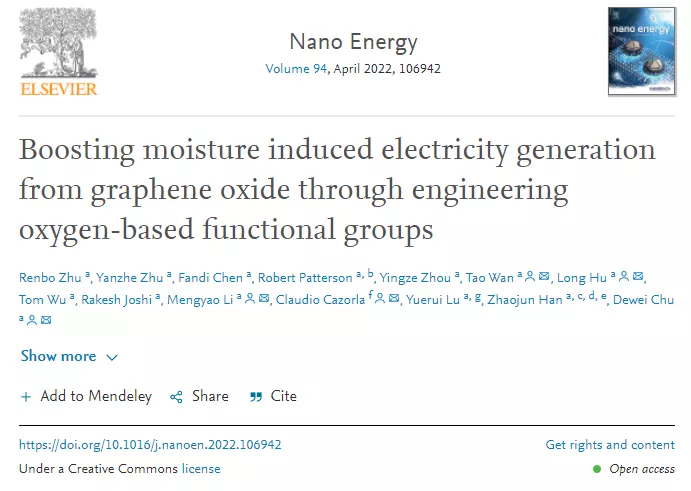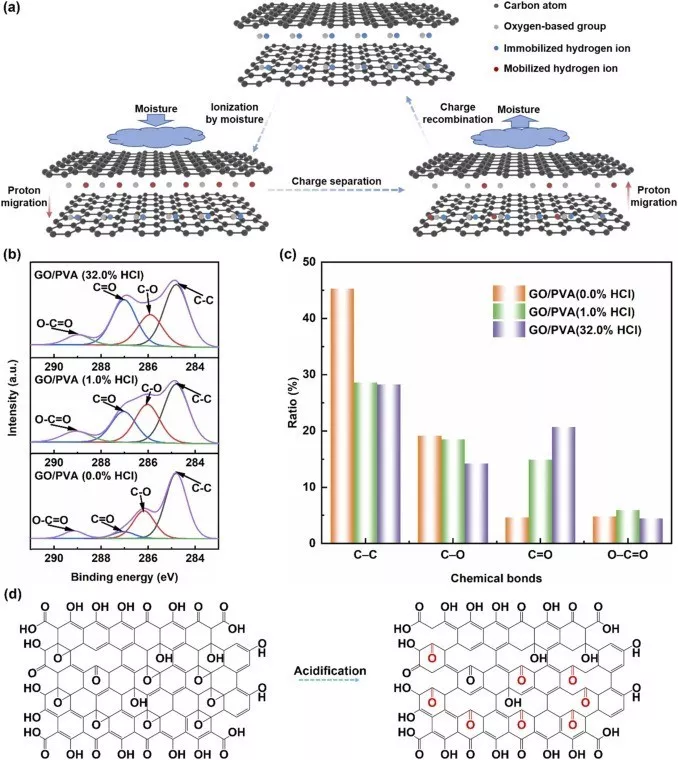On May 12, strategic elements, an Australian venture capital company, announced that they and their partners have jointly developed a new battery technology that can generate electricity through moisture in the air. At present, this technology can only generate small electric energy, but it has been applied in some skin patch devices, and there may be larger application scenarios in the future.

It is reported that more than 50% of the solar energy absorbed by the earth every day is used to evaporate water such as seawater into steam to maintain the humidity of the air. The wet gas generator (MEG) developed by the company can absorb the water vapor in the air and convert it into electric energy through simple equipment and green chemical reaction.
MEG is mainly made of carbon based materials, such as carbon nanotubes, graphene oxide, etc. after the chemical bond of oxygen in the internal materials absorbs water molecules, it will release movable electric ions and generate certain electric energy. MEG made of graphene oxide can produce a voltage of 0.6V at 80% relative humidity. The company has designed another MEG that can generate a voltage of 0.85v and a voltage of 9.28 at 75% relative humidity μ A current. Then several megs can be connected in series or in parallel to obtain higher voltage or current to meet the needs of electronic equipment.

In addition to environmental protection, this power generation technology also has great advantages in volume. It uses green and safe non flammable materials, and can be printed on flexible plastic. After 2000 bends, it still maintains 91% of the initial voltage output.
At present, many fitness electronic skin patches and intelligent patches do not have too high voltage requirements, and this MEG can just supply power for this kind of equipment. Directly generate electricity through moisture in the air or sweat generated during exercise, without worrying about charging the equipment. With the further development and upgrading of this technology, it may be applied to larger electronic devices in the future, such as smart watches.
In recent years, countries around the world are promoting the development of new energy industry, and more and more environmentally friendly and energy-saving battery technologies came into being. Although these technologies are useless at this stage, they are likely to really play a significant role in the future. Nowadays, lithium-ion batteries are used in electronic equipment, cars and power storage stations, which intensifies the global demand for lithium minerals and causes certain environmental damage. Therefore, there is an urgent need for new batteries to break the deadlock and promote the development of green environmental protection.